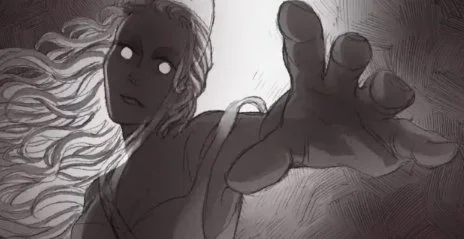Slay the Princess Ludonarrative Selfhood: How Player Choice Creates the Psyche
Most psychological readings of Slay the Princess begin with the assumption that the Hero has a pre-existing mind. Analysts describe the Voices as internal parts, complexes, or archetypes that already live within the character before the story begins. Even the game itself initially presents the Voices as if they are pre-formed identities waiting to be awakened. But this approach overlooks something unusual about the narrative structure of Slay the Princess. The psyche the player navigates is not given at the start. It is built through action. The Hero does not arrive with a fixed psychology. The Hero acquires one through choice.
In other words, Slay the Princess constructs identity procedurally. The Hero becomes someone because of what the player does. The mind is not a container. It is a process. The rules of that process are authored by the game, but the contents are authored by the player. This creates a novel form of narrative identity that blends psychological realism with game mechanics, and it offers fertile ground for a new line of research: ludonarrative selfhood.
The Psyche as an Emergent System
Traditional psychological character studies assume a stable interiority. Even when characters fragment or develop new traits, their core identity is usually treated as something that predates the events of the story. In Slay the Princess, this assumption is difficult to maintain. The first loop begins with a Hero who has no past, no memories, and no stated personality. The Narrator speaks to the player as if the Hero is a construct defined by the mission. The task is simple: walk the path, enter the cabin, and slay the Princess.
As the player makes choices, the internal Voices begin to appear. These Voices do not emerge randomly. They appear in direct response to specific actions or attitudes. A player who shows suspicion activates the Paranoid Voice. A player who attempts diplomacy activates the Rational Voice. A player who pursues violence or fixation activates the Voice of the Cold. The pattern continues across loops, generating new internal personalities that align with the player’s previous behavior.
This design suggests that the psyche is not inherited. It is authored. The Hero carries forward behaviors that crystallize into identities. The psyche becomes an emergent system, one that forms around repeated decisions rather than pre-existing traits.
This raises a central research question: can a narrative use branching structure to simulate psychological development? If so, Slay the Princess may represent one of the first significant examples of procedural psychology in game storytelling.
Choice as Psychological Construction
In standard moral choice games, the player’s decisions influence outcomes but rarely influence the actual personality of the protagonist. Morality meters and branching paths tend to treat identity as a fixed vessel that is filled with points, consequences, or reputation scores. The protagonist remains the same person, simply exhibiting different moral tendencies.
In Slay the Princess, the opposite is true. The protagonist becomes someone different each time the player makes a choice. Aggression does not merely shift the story toward a violent outcome. Aggression creates a psychological part that embodies aggression. Diplomacy does not simply unlock a peaceful branch. Diplomacy produces a mental voice that pushes toward cooperation and understanding.
These parts then argue, negotiate, and interpret future events. The player does not simply choose for the Hero. The player generates the agents that influence future choices. The result is a system that resembles the psychological concept of self construction. Personality emerges from repeated acts, emotional patterns, and interpretive habits. The game allows this process to happen in real time, giving it a uniquely interactive form.
This dynamic suggests an important interpretive claim. The Hero is not a character with a pre-existing mind. The Hero is a record of choices given form and voice.
The Player as Co-Author of the Psyche
Because the psyche is built through choice, the player is not only guiding the protagonist. The player is building the protagonist. The game acknowledges this through the recursive loop structure. At the beginning of each cycle, the Hero remembers fragments of the previous loop. The fragments that persist tend to align with the dominant psychological voice from the prior run. A loop governed by anger produces an aggressive, suspicious Hero in the next. A loop governed by fear produces a cautious Hero who distrusts the Narrator. A loop governed by empathy leads to a Hero who questions violence.
The player can therefore shape the Hero’s identity across time by choosing which impulses to feed and which ones to suppress. This resembles the psychological theory that repeated behavior shapes personality far more than isolated impulses do. In this way, the player becomes a kind of externalized superego, determining which traits will survive the next loop.
The psyche is not static. It is sculpted.
This stands in contrast to games that allow players to choose identities but do not allow those identities to argue, fracture, or reshape each other. Slay the Princess takes the bold step of allowing every choice to contribute to the construction of a fragmented but coherent psychological system.
Branching Structure as a Model of Self Formation
The recursive branching structure of Slay the Princess is not only a storytelling device. It is a model of how personalities form through accumulated decisions. Each loop offers a series of problems to solve. The Hero responds, and those responses shape the emergence of future voices. The overlaps between loops show the persistence of psychological traits even after conscious memory fades. This mirrors the psychological idea that trauma, habit, and emotional learning can survive conscious forgetting.
The game’s branching architecture essentially simulates the recursive nature of identity. Instead of a linear journey, the player experiences a cycle where past tendencies influence future interpretations. The psyche becomes a self modifying system. The player is both actor and architect. The narrative structure becomes a metaphor for how humans develop patterns of thought through repeated cycles of experience.
This procedure resembles the concept of a dynamic narrative self. People construct themselves over time by interpreting past actions and projecting future ones. The game gives this abstract psychological process a concrete, interactive form.
Procedural Psychology as a Narrative Device
All of this leads to the central idea of procedural psychology. This term describes a narrative approach where psychological traits, identities, and conflicts are not prewritten but are instead generated by the player’s actions through game mechanics.
In Slay the Princess, procedural psychology is achieved through four key mechanisms.
Choice driven emergence of internal parts.
New voices appear when the player demonstrates consistent behaviors. This mirrors how internal parts may develop around emotional patterns in real life.Persistence of psychological traits across loops.
Voices become louder or quieter depending on prior decisions. This simulates the consolidation of personality traits over time.Interactive conflict between internal parts.
Voices argue, contradict each other, and influence the Hero. This demonstrates internal conflict as a dynamic system rather than a static condition.A malleable protagonist whose psyche changes shape based on player agency.
Identity is not fixed. It is fluid, responsive, and authored in collaboration between the player and the game.
These mechanics create a narrative in which psychology becomes the primary site of transformation. The story does not simply react to the player’s moral alignment. The story reacts to the formation of a personality.
Implications for Game Narrative Theory
If we treat Slay the Princess as a demonstration of procedural psychology, several important implications emerge.
First, narrative identity in games can be meaningfully constructed rather than merely selected. This opens possibilities for future games to simulate psychological growth, regression, or fragmentation as a direct outcome of player behavior.
Second, interactive stories can model the recursive nature of self development. Identity can be portrayed as a looping, self referencing process rather than a stable character sheet.
Third, player agency gains psychological weight. The player is not merely choosing actions. The player is choosing who the protagonist becomes.
Finally, Slay the Princess reveals how interactive narratives can mirror the complexity of human psychology more effectively than static media. The combination of branching paths and internal voices allows the game to externalize processes that usually remain internal.
Simply Put
Slay the Princess challenges traditional assumptions about character psychology. Instead of presenting a protagonist with a predetermined mind, the game invites the player to construct one. The psyche emerges from choices, persists across loops, and becomes a living system shaped by behavior. This procedural generation of identity suggests a new direction for narrative design where psychological realism is created not through exposition but through mechanics.
Ludonarrative selfhood describes this phenomenon. It marks a shift in how games can represent the mind. Identity becomes something the player builds, not something the writer delivers. By doing so, Slay the Princess creates one of the most compelling models of psychological storytelling in contemporary game narrative and invites further research into how games can simulate, explore, and even challenge our understanding of the self.
References
Bruner, J. (1990). Acts of meaning. Harvard University Press.
Juul, J. (2005). Half-real: Video games between real rules and fictional worlds. MIT Press.
Murray, J. H. (1997). Hamlet on the Holodeck: The future of narrative in cyberspace. MIT Press.
Ricoeur, P. (1992). Oneself as another. University of Chicago Press.
Ryan, M. L. (2006). Avatars of story. University of Minnesota Press.
Salen, K., & Zimmerman, E. (2004). Rules of play: Game design fundamentals. MIT Press.














